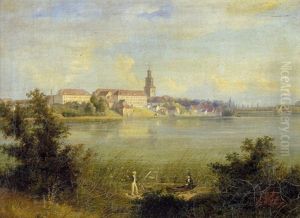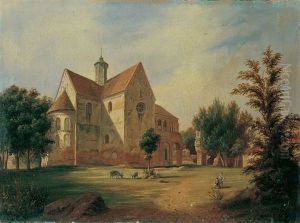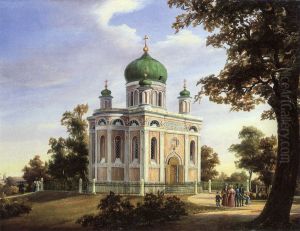Carl Daniel Freydanck Paintings
Carl Daniel Freydanck was a 19th-century German painter, primarily known for his detailed landscapes and cityscapes. Born on September 10, 1811, in Potsdam, Germany, Freydanck developed an interest in art at a young age. He was initially self-taught but later received formal training at the Prussian Academy of Arts in Berlin, where he honed his skills and technique under the guidance of established artists.
During his career, Freydanck became particularly recognized for his panoramic views of cities and his depictions of architectural landmarks, often capturing the romantic and picturesque qualities of his subjects. His works often reflected the Biedermeier period's aesthetic, a style that emphasized simplicity and a sense of quietude in reaction to the excesses of the previous Empire style.
Freydanck's paintings were characterized by their attention to detail, vibrant color palette, and the use of light to create atmospheric effects. He was also known for his ability to accurately depict architectural features, which made his paintings popular among patrons who sought visual records of specific places.
Despite his focus on cityscapes, Freydanck was also capable of painting rural scenes and landscapes, demonstrating a versatility in subject matter. His works were well-received in his time, and he participated in exhibitions, gaining some acclaim and a base of collectors.
Carl Daniel Freydanck died on February 15, 1887, in Berlin, leaving behind a legacy of paintings that serve as historical documents of the urban and rural environments of his time. His works continue to be of interest to collectors and historians, providing insight into the 19th-century landscape and urban development, as well as the aesthetic tastes of the Biedermeier period.




